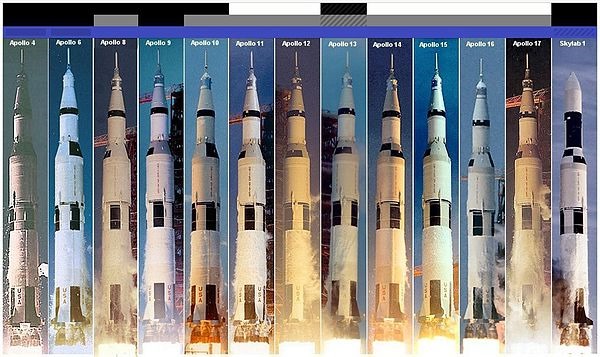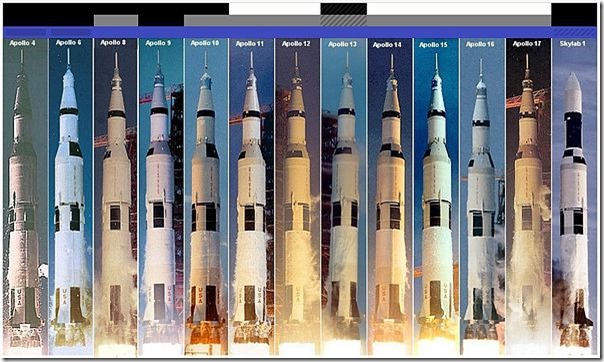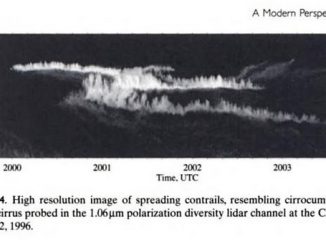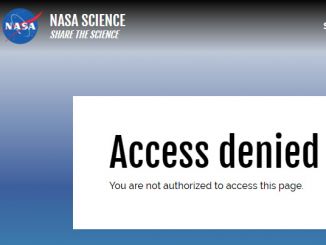
To one who has faith, no explanation is necessary. To one without faith, no explanation is possible.
Thomas Aquinas
En må kunne anta at de fleste vil fatte en smule interesse for et dokumentert mirakel, og at det således bør være på sin plass å ta en titt på en av de største slike som noen gang har vederkveget menneskeheten.
Saturn V-rakettene var så gode at de ble forkastet
SA-500F
Facilities integration
Used to check precise fits and operations of facilities
before a flight model was ready. First stage scrapped,
second stage converted to S-II-F/D, third stage whereabouts unknown.SA-500D
Dynamic testing
Used to evaluate the systems’ response to vibrations.
On display at the U.S. Space & Rocket Center, Huntsville, Alabama [43]SA-501
Apollo 4
November 9, 1967
First test flight (unmanned), complete successSA-502
Apollo 6
April 4, 1968
Second test flight (unmanned), with some serious
second and third stage problems occurringSA-503
Apollo 8
December 21, 1968
First manned flight of Saturn V, first manned lunar orbitSA-504
Apollo 9
March 3, 1969
Earth orbit LM testSA-505
Apollo 10
May 18, 1969
Lunar orbit LM testSA-506
Apollo 11
July 16, 1969
First manned lunar landing, at Mare TranquillitatisSA-507
Apollo 12
November 14, 1969
Second manned lunar landing, near site of Surveyor 3 at Mare Cognitum.
Vehicle was struck twice by lightning shortly after liftoff with no serious damage.SA-508
Apollo 13
April 11, 1970
Severe, near catastrophic pogo oscillations in second stage
caused early center engine shutdown. Service Module O2 tank rupture
caused mission abort en route to moon, crew saved.SA-509
Apollo 14
January 31, 1971
Third manned lunar landing, near Fra MauroSA-510
Apollo 15
July 26, 1971
Fourth manned lunar landing, first Lunar Roving Vehicle, at Hadley-ApennineSA-511
Apollo 16
April 16, 1972
Fifth manned lunar landing, at DescartesSA-512
Apollo 17
December 7, 1972
Sixth and final manned lunar landing, at Taurus-Littrow.
First and only night launchSA-513
Skylab 1
May 14, 1973
The third stage (SIV-513) was replaced for flight by the Skylab module
and is on display at Johnson Space Center.[43]SA-514
Unused
Designated but never used for Apollo 18 or 19.
First stage (S-IC-14) on display at Johnson Space Center,
second and third stage (S-II-14,S-IV-14) on display at Kennedy Space Center.[43]SA-515
Unused
Designated but never used as a backup Skylab launch vehicle.
The first stage is on display at Michoud Assembly Facility.
The second stage (S-II-15) is on display at Johnson Space Center.
The third stage was converted to a backup Skylab orbital workshop
and is on display at the National Air and Space Museum.[43]
Halleluja!
Som rollefiguren Jules Winnfield i Samuel L. Jacksons skikkelse sa det i den noget bisarre filmen Pulp Fiction etter at en mann hadde tømt alle seks skuddene i en revolver mot ham fra tre meters hold og bommet med alle:
We just witnessed a miracle, and I want you to fucking acknowledge it!
Mirakelet vi ser er at NASA kun gjennomførte to ubemannede prøveoppskytinger (1967 og 1968) der den første var vellykket, den andre en fiasko, før de fant det for godt å putte de tre astronautene Borman, Lovell og Anders ombord for deretter å gjennomføre en vellykket oppskyting og en tur rundt månen og tilbake med Apollo 8.
Ledelsen i NASA må ha følt seg rampete uansvarlige da de tok denne mer enn hårreisende avgjørelsen. Nei, vi har ikke fått testet rakettsystemet godt nok, og halvparten av de to prøveoppskytingene gikk skeis, men pokker heller! Griseflaks er da ikke forbudt?
Deretter gjennomførte NASA 9 oppskytinger til, Apollo 9-17, hvorav alle oppskytingene gikk etter planen. Det var ikke før Apollo-programmet var over i og med Apollo 17 og Wernher von Braun hadde fått fyken (“sa opp sin stilling”), og neste Saturn V-rakett (modifisert utgave) skulle frakte utstyr til romstasjonen Skylab 1 i 1973, at oppskytingen igjen opplevde motgang. Problemet var voldsomme vibrasjoner, noe som var en gjennomgangsmelodi i hele Saturn V-programmet, og som i dette tilfellet ristet i filler utstyr de fraktet.
De to siste Saturn V-rakettene ble aldri skutt opp.
Nå innrømmer NASA at de ikke kan dra til månen med mennesker fordi de blant annet mangler egnet bærerakett
Resten er et utdrag fra Phil Kouts kronikk Is There Any Hope for a Moon Base?
Since NASA’s Constellation Program (CxP), intended to return humans to the Moon by 2020 was cancelled in 2010, there has been no shortage of professional views as to what should happen next. Nevertheless, development work on systems to fly beyond low-Earth orbit (LEO) has continued without interruption, with the main targets remaining the same: to resurrect technologies that were allegedly available back in the late 1960s.
So, the key aspects of the current strategy defined in the US Authorization Act of 2010 are unsurprising: to develop a heavy launch vehicle and a module for the crew, capable of the safe return from space journeys beyond LEO. Doesn’t this simply mean a rocket analogous to the Saturn V launch vehicle and a capsule similar to the Apollo Command Module (CM)?
However, the CxP plan to return to the Moon was not the first of its kind. An historical review (Arch. Study, 2005) pointed to a number of NASA task forces which, since at least 1989, had been assembled periodically in order to formulate the next viable Moon mission. A permanent base on the Moon had seemed to be the most logical and attractive goal, bearing in mind the apparent success of the Apollo program. Had the planned road maps of the early 1990s been realised within a span of some 15 years, in all probability a functioning inhabited outpost would have been developed on the Moon by now.The most recent of the human space flight projects, the CxP again planned to at last get to the Moon. Until its cancellation in 2010, the project had achieved remarkable progress in planning, design and early development at a cost of around US$10 billion. Yet, on 15 April 2010, President Obama – speaking to scientists, astronauts and policy makers – finally denounced the CxP. Instead of a program to return to the Moon, he outlined the plan for NASA:
«By the mid-2030s, I believe we can send humans to orbit Mars and return them safely to Earth,» the President said. «And a landing on Mars will follow, and I expect to be around to see it!» (Pres. Speech, 2010)
Obviously, this totally new strategy means no landings, either on the Moon or on Mars, for at least some 20 years from 2010. So then, what is the major problem with landing on the Moon? What does it really mean in terms of technology and logistical challenges to repeat a feat which, according to the record, was confidently accomplished many times, more than 40 years ago?
The answer can be found in the latest US Government and NASA documents. Any such mission is a complex chain of essential operations all of which have to be accomplished safely. It is sufficient for one or two links in the chain to be unreliable to make a Moon return deadly dangerous, and the mission becomes absolutely impossible when just one link is incomplete. Such links were actually acknowledged by NASA.
…
The findings of the Augustine Committee regarding lunar exploration demonstrate that the connection to the data from Apollo systems available in the 1960s, i.e. human landing and surface systems, as well as the ascent capabilities of Apollo, has been deliberately sidelined. This action implies that all the data from Apollo is of little value to the actual requirements of space exploration, which takes us to that ascent vehicle – the Saturn V rocket.
The Heavy-Launch Rocket
At the outset of the CxP in 2005, NASA put forward this recommendation:‘Adopt and pursue a Shuttle-derived architecture as the next-generation launch system for crewed flights into LEO and for 125-mT-class cargo flights for exploration beyond Earth’s orbit. After thorough analysis of multiple … options for crew and cargo transportation, Shuttle-derived options were found to have significant advantages with respect to cost, schedule, safety, and reliability.’ (Arch. Study, 2005 p.47)Despite these advantages, the Space Shuttle system as a key candidate had a fundamental flaw: limited payload capacity. It could hardly serve as a heavy lift vehicle for a Moon mission.
Indeed, the Saturn V allegedly used to take up to LEO a payload of approximately 120 tons, while Space Shuttle systems are limited to payloads of around 100 tons or so, including the orbiter. The redesign of these systems presents a completely new task (see below).
It is not surprising that NASA has continued to examine options for the suitability of various powerful rockets for travelling to the Moon and beyond. It would seem logical that this next generation of launch rockets would have taken into account the achievements of the Saturn V system deployed during Apollo.
First-Stage Engines (F-1): The success of the Apollo program was largely based on the performance of the Saturn V rocket with its five massive F-1 engines in the first stage, which were claimed to be the most powerful rocket engines ever built. However, in NASA’s comprehensive 750-page Architecture Study, the F-1 engine is neither considered as a fall-back option nor analysed as a prototype for further development. It is only once vaguely mentioned in this detailed review of NASA’s capabilities in rocket science and technology. (Arch. Study, 2005 p.467)
Instead, four years into the CxP, NASA had made no clear decision regarding what the next heavy-lift launch vehicle should be based upon. By mid-2009, the Augustine Committee was still trying to choose between the newly suggested ‘Ares I + Ares V architecture … a Shuttle-derived vehicle; and a «super-heavy» launcher derived from Evolved Expendable Launch Vehicle … heritage’. (Augustine, 2009 p.64)
The latter were vehicles of medium capacity, routinely used by NASA in recent unmanned missions. The Ares rockets were part of the CxP. Here again, the Augustine Committee mentions neither the Saturn V, nor the F-1 engines.
Furthermore, the GAO points to an issue identified during the early study and modeling of a new Ares I crew launch vehicle: ‘Current modeling indicates that thrust oscillation within the first stage causes unacceptable structural vibrations. There is a possibility that the thrust oscillation frequency and magnitude may be outside the design limits of the Ares design requirements (emphasis added).’
Then, the GAO continues: ‘A NASA focus team studied this issue and has proposed options for mitigation including incorporating vibration absorbers into the design of the first stage and redesigning portions of the Orion Vehicle to isolate the crew from the vibration… Failure to completely understand the flight characteristics of the modified booster could create a risk of hardware failure and loss of vehicle control.’ (GAO, 2008 p.10)
This statement has an historical aspect. The same problem – i.e. structural vibrations in the body of the rocket, caused by the vibration of the thrust chambers of the first stage engines – was found at the second-ever trial of the Saturn V, after its unmanned launch on 4 April 1968, known as Apollo 6. The so-called pogo vibrations were found to be so large that they were recognized as a threat to the health and survival of the crew and to the integrity of the payload, including the Lunar Module (LM). Even at the time it was admitted: ‘Had there been men on board Apollo 6, the crew probably would have aborted the mission during the pogo, when they would have been so violently banged around that they couldn’t have operated the spacecraft.’ (Apollo, 1989 p.314)
However, without any further test launches since the problematic trial in April, in December 1968 the Saturn V, according to NASA reports, successfully took Apollo 8 to fly around the Moon with a human crew. Much later, during the third unmanned launch of the Saturn V with Skylab on board, the vibrational problem returned. During the launch on 14 May 1973, the Skylab station was heavily damaged due to the severe vibrations of the first stage of the rocket. One solar panel was torn away from the station body and severely dented it as a result. For some period of time, due to the damage, the station was treated as lost.
Yet it begs the question: how did the Saturn V manage to run perfectly from 1968 through to 1972 and then, some six months after the end of the Apollo missions succumb to the same problem that it had at its birth? For it was between the second and the third unmanned launches of the Saturn V that all the apparently successful missions to the Moon occurred.
These historical events could help us to understand the recent decision-making processes in NASA during the development of a heavy launch vehicle. While not relying on Apollo’s best technology, NASA has struggled to select the design of a large launch rocket. It faces immense engine vibration problems similar to those that occurred during at least two unmanned Saturn V launches.
In mid 2009, some 18 months after its first comment on vibrations identified in the first stage, the GAO admitted at the time of the Augustine Committee report that NASA still had vibrational problems with Ares I: ‘Another issue related to vibration is vibroacoustics – the pressure of the acoustic waves – produced by the firing of the Ares I first stage and the rocket’s acceleration through the atmosphere – which may cause unacceptable structural vibrations throughout Ares I and Orion. According to agency officials, NASA is still determining how these vibrations and acoustic environments may affect the vehicles.’ (GAO, 2009 p.13)
The Augustine Committee expressed similar concerns about the Ares I rocket, without suggesting any viable solution. ‘…NASA determined that the original plan to use the Space Shuttle main engines on the Ares I upper stage would be too costly… But the replacement engine had less thrust and inferior fuel economy, so the first-stage solid rockets had to be modified to provide more total impulse. This in turn contributed to a vibration phenomenon, the correction of which has yet to be fully demonstrated.’ (Augustine, 2009 p.111)
To sum-up, a four-year period of research and design has resulted in identification of the key problems analogous to those experienced with the Saturn V unmanned missions. Soon, the Ares rocket development was cancelled. The vibration problem of Apollo 6 allegedly had been solved by December 1968 since, for the Apollo 8 launch vehicle, this supposition was made: ‘The new helium prevalve cavity pressurization system will be flying on the S-IC for the first time. In this system, cavities in the liquid oxygen prevalves are filled with helium to create accumulators or «shock absorbers» to damp out oscillations. This system was installed to prevent excessive longitudinal oscillations experienced in [sic] the Apollo 6 flight.’ (Ap-8 PK, 1968 p.47)
If this oscillation issue truly had been settled, then one must forcibly conclude that this fix was withheld at the time of the Skylab accident and is not to this day considered a viable solution for future space travel. So the observation remains that, once again, there is no reliance on the Apollo experiences in this regard, all allegedly successful Saturn V launches for the nine manned Apollo missions are questionable.
Second-Stage Engines (J-2X): Whatever the first stage of the heavy lift vehicle would be, for the second stage a hydrogen engine, J-2X, had confidently been selected. A recommended rocket stage for departure from Earth’s orbit will also require J-2X. This means the development of a modified engine as a derivative from the J–2 upper-stage engine used in the Apollo-Saturn system.
Along with the F-1 engine, the J-2 engine was the basis of Apollo’s success. The engine had a thrust that could not be delivered by any other means of comparable size and weight, and it was essential, first, to bring the payload into LEO, and then to launch the lunar combo, (the Command/Service Module) CSM/LM craft to the Moon. The J-2 engine was not used after the Apollo missions except on one launch of the Saturn 1B rocket in 1975 for a space rendezvous with the Soyuz craft in LEO (the Apollo-Soyuz Test Project).
At the beginning of the CxP, NASA was determined to modify the J-2, although the agency admitted there were problems: ‘The use of a J–2S engine for an Earth Departure Stage (EDS) is an area of high risk because a J–2S engine has never been flown. The J–2S (J–2 simplified) was designed to replace the Saturn vehicle upper stage J–2 engines… Thus, the estimated time of 4 years for qualification, fabrication, and testing of the engine poses a significant risk to the program.’ (Arch. Study, 2005 p.8)
After the analysis and design work had been already under way for some three to four years, the GAO then made a provisional suggestion of a required time frame and intensity for this redevelopment:‘The development schedule for the J-2X is aggressive, allowing less than 7 years from development start to first flight, and highly concurrent.’ (GAO, 2008 p.12)
If the engine had indeed been reliably used some 40 years ago why would it now take – at the current rate of progress in technology – a massive seven years for its redevelopment? And why was the redevelopment which is going to be concurrent, raised as a troubling aspect? Naturally, NASA should have relied on its experience with the Apollo systems on similar concurrent development works.
The GAO reaches an astounding conclusion on the J-2X upper-stage engine: ‘Although the J-2X is based on the J-2 and J-2S engines used on the Saturn-V … the number of planned changes is such that, according to NASA review boards, the effort essentially represents a new engine development.’ (GAO, 2008 p.10)
How does this conclusion compare with the whole Apollo spacecraft development, which was completed in the mid-1960s within seven years, and was indeed new and concurrent with several other critical developments – all completed for the first time?
The construction of a heavy launch rocket as the key part of the CxP was eventually stopped by 2010. The crew vehicle, Ares I, was tried in unmanned flight only once, in October 2009, and it was already clear at the time that it had no future. There was no reliance on the Saturn V’s key elements such as the powerful F-1 engine of the first stage, and there was very little reliance on the J-2 engine of the second stage.
In the CxP, the new Moon rocket appeared to be based on new developments unrelated to the Saturn V. Moreover, the legendary F-1 engine is not even mentioned in modern NASA documents. It is as if it had never existed. While NASA doesn’t have a suitable heavy launcher, it implies by this omission that it doesn’t have confidence in the Apollo technological capability, either.
Les mer av Kouts krasse kronikk her.




